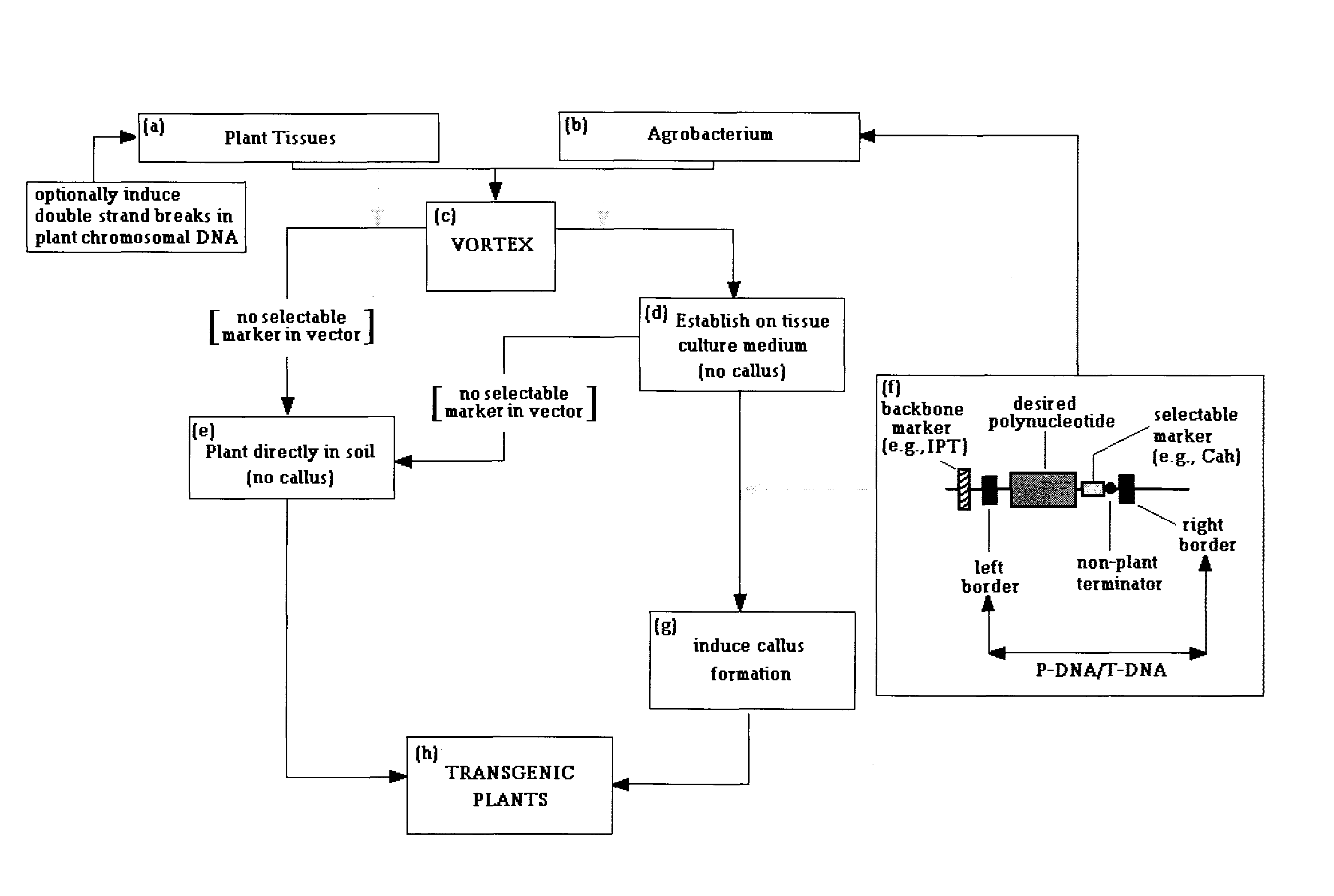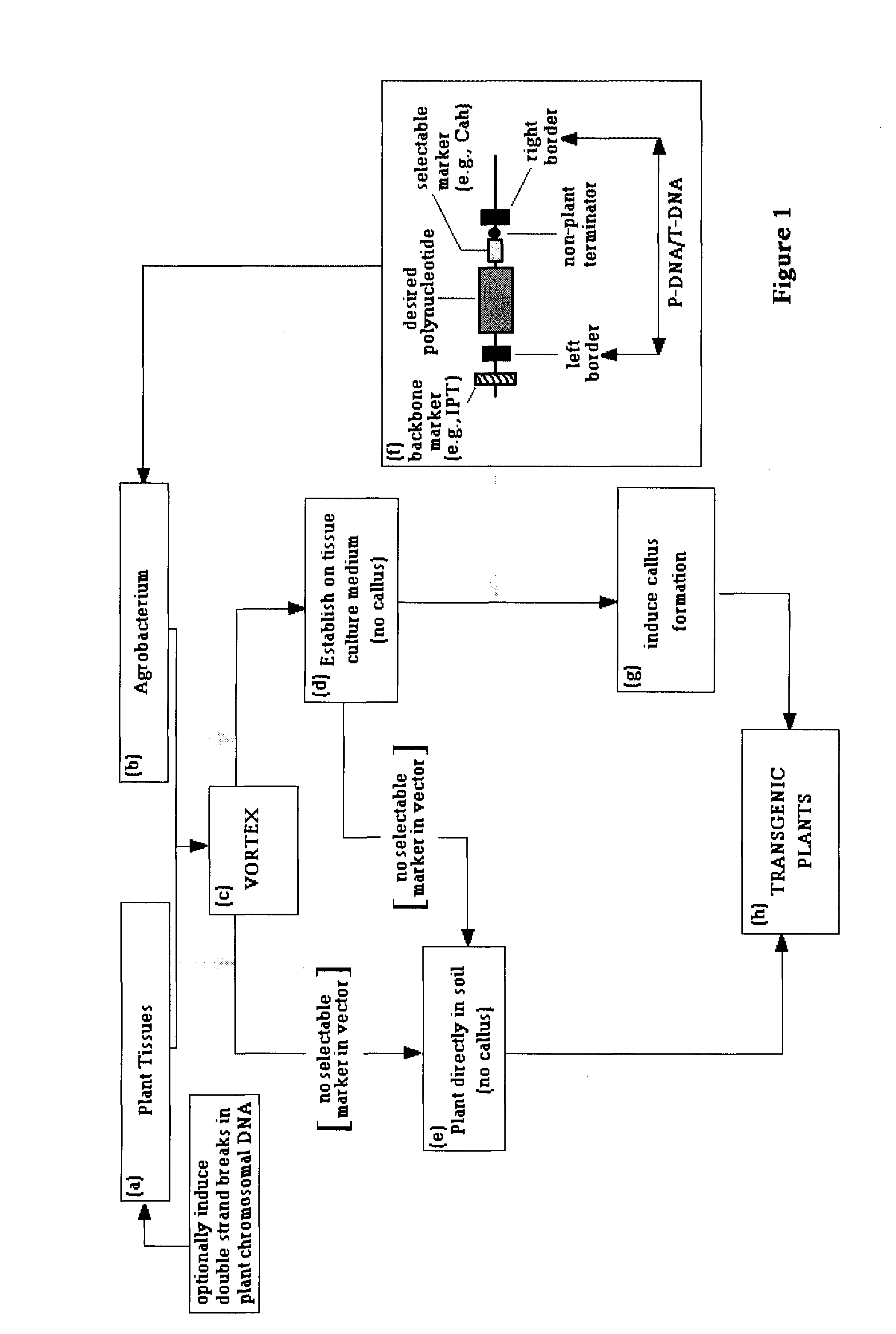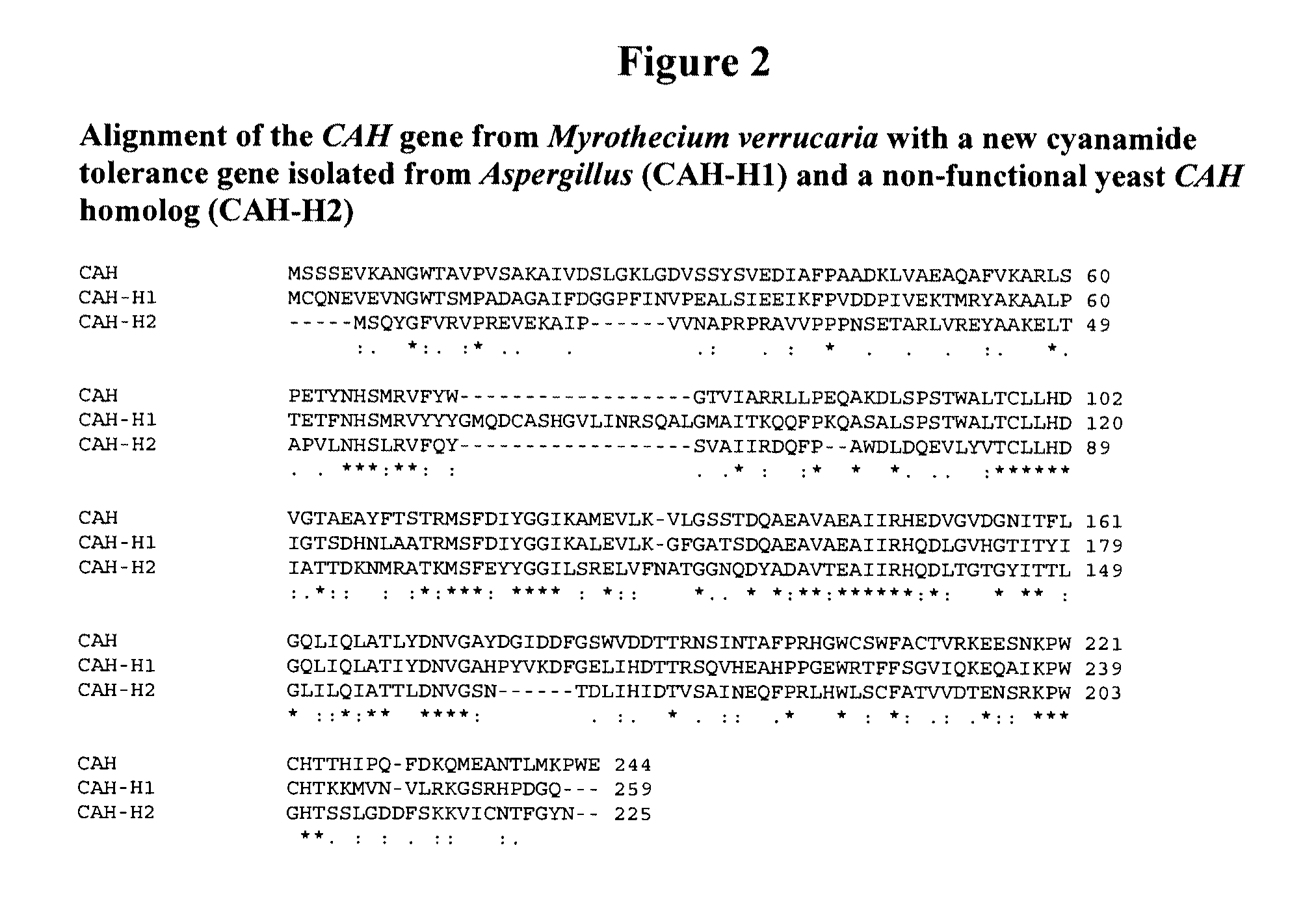Refined Plant Transformation
a plant and genome technology, applied in the field of refined plant transformation, can solve the problems of time-consuming and species-specific tissue culture manipulation, methods that do not only integrate the desired polynucleotide(s) into the genome of the plant, and additional and superfluous nucleic acids, so as to increase the frequency of stably transforming, improve the efficiency of stable transformation, and increase the frequency of integrating the desired polynucleotide
- Summary
- Abstract
- Description
- Claims
- Application Information
AI Technical Summary
Benefits of technology
Problems solved by technology
Method used
Image
Examples
example 1
Development of a Species-Independent Method to Obtain Transgenic Plants without the Need for Plant Cell Proliferation and Regeneration
[0233]Binary vectors that were created to develop a species-independent transformation method carry an intron-containing beta glucuronidase (GUS) gene (Genbank accession number AF354045) operably linked to a promoter and terminator. The MMV24P promoter of mirabilis mosaic virus (Maiti et al., U.S. Pat. No. 6,420,547, 2002), and the promoter of the sugarcane ubiquitin-4 gene (Albert and Wei, US Patent 20020046415A1, 2002) were used to transform dicotyledonous and monocotyledonous plants, respectively. The binary vectors were introduced into Agrobacterium by incubating competent LBA4404 cells (50 μL) with 1 μg of vector DNA for 5 minutes at 37° C., freezing for about 15 seconds in liquid nitrogen (about −196° C.), and incubating again at 37° C. for 5 minutes. After adding 1 mL of liquid broth (LB), the treated cells were grown for 3 hours at 28° C. and ...
example 2
Optimized Integration of Transferred DNAs
[0252]Example 1 demonstrates that the transfer of DNA from Agrobacterium to individual plant cell nuclei can be optimized for many different plant species by agitating seedlings in Agrobacterium suspensions. This example also shows that not all the transferred DNAs subsequently integrate into the plant cell genome. To optimize the second phase of the transformation process, 100 maize seedlings were infected as described in Example 1, and placed on media that contain low levels (50 parts per million) of methyl methane sulfonate (MMS), from 1 day prior to infection until 1 day after infection. An additional 100 seedlings were placed on control media that lack MMS. Approximately 2 weeks after infection, seedlings were assayed for stable GUS expression. Interestingly, 25% of MMS-treated seedlings contained multiple blue sectors on all assayed tissues whereas only 2.5% of control seedlings contained an occasional blue spot. Thus, the frequency of ...
example 3
New Binary Vectors for Transformation of Plants
[0262]Current methods to express a foreign gene in crop plants result in the introduction of various nucleic acids that are derived from non-food sources. The introduction of such DNA in the food supply is undesirable and should be limited or avoided. The current invention provides tools and methods to (1) replace the Agrobacterium-derived T-DNA with a DNA fragment derived from a food source, (2) prevent transformation events that contain bacterial vector backbone sequences from developing into whole plants, (3) replace the frequently used nopaline synthase (nos) terminator derived from Agrobacterium with a terminator derived from a food source, and (4) replace frequently used virus promoters with promoters derived from food sources.
[0263]1. New Transfer DNA
[0264]The Agrobacterium-derived T-DNA is delineated by a 25-bp left-border (LB) and right-border (RB) repeat, which function as specific recognition sites for virD2-catalyzed nicking...
PUM
| Property | Measurement | Unit |
|---|---|---|
| concentration | aaaaa | aaaaa |
| pH | aaaaa | aaaaa |
| concentrations | aaaaa | aaaaa |
Abstract
Description
Claims
Application Information
 Login to View More
Login to View More - R&D
- Intellectual Property
- Life Sciences
- Materials
- Tech Scout
- Unparalleled Data Quality
- Higher Quality Content
- 60% Fewer Hallucinations
Browse by: Latest US Patents, China's latest patents, Technical Efficacy Thesaurus, Application Domain, Technology Topic, Popular Technical Reports.
© 2025 PatSnap. All rights reserved.Legal|Privacy policy|Modern Slavery Act Transparency Statement|Sitemap|About US| Contact US: help@patsnap.com



